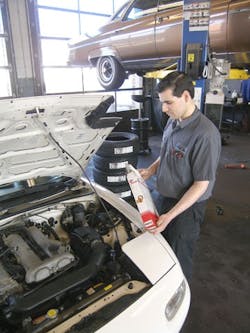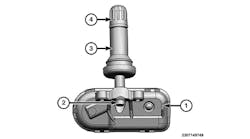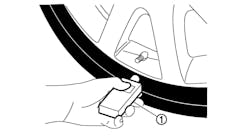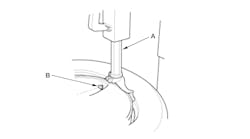The economic climate is conducive to selling preventive maintenance as a way to save your customers money, says Rich White, executive director of the nonprofit Car Care Council. The change of the season is an ideal time to remind customers that routine maintenance of components, from brake parts and shocks to wipers and lights, extends the life of a vehicle and makes it safer to drive. But that may not be enough to get vehicle owners to part with their money, as high fuel prices continue to eat into household budgets.
“Take advantage of the fact gas prices are up. Tell them you can’t control the price of gas, but you can control how much gas you burn by performing proper maintenance and how you drive. Performing simple and inexpensive maintenance can save as much as $1,200 per year in gas costs.”
Breaking down the $1,200
White has the statistics to back up that $1,200 savings figure. You need to be ready to share this information with customers, he says.
Assuming 15,000 miles driven annually and an average 20 miles per gallon, a vehicle would use 750 gallons of gas. At $4 per gallon, the cost for gas at that mpg would be $3,000. White offers several examples of vehicle maintenance and driving habits that impact gas mileage, adversely if left unmaintained and positively if corrected:
• A properly tuned car improves mileage by an average of 4% or $120 per year.
• Keeping tires properly inflated can improve mileage up to 3.3% or $99 per year.
• Replacing dirty or clogged air filters improves mileage up to 10% or $300 per year.
• Using the vehicle manufacturer-recommended grade of motor oil improves mileage by 1% to 2% or $60 per year.
• Aggressive highway and city driving (splitting the miles evenly between the two) reduces gas mileage 33% and 5%, respectively, costing the driver $570 per year.
• An extra 100 pounds in the trunk reduces fuel economy by up to 2% or $60 per year.
“The examples total $1,209 and do not include some of the other driving habits and maintenance that can impact fuel economy,” says White. “For example, a faulty O2 sensor alone can reduce fuel economy by as much as 40% and cost $1,200 per year.”
Season for savings
After a dreary winter, people are ready to spend more time outdoors, which usually means more time in their cars. But the coming of spring may not be enough motivation to get car care steps done for cash-strapped customers, at least until their income tax refunds arrive. A reminder that routine maintenance improves fuel economy adds incentive.
Although fuel savings are a powerful inducement, it is not the only one. “Some motorists think they are saving money when they put off needed vehicle maintenance. What they don’t realize is that neglecting routine maintenance can end up costing a lot more in the form of more extensive repairs or lost resale value,” says White. “Following a routine maintenance program makes financial sense, extending useful vehicle life and helping avoid costly repairs down the road.”
The message to your customers? “Invest a little and save a lot,” he says. “Take care of little things first and (don’t) run the risk of a major repair. When consumers have less money, they are looking for solutions to how they can save. They can’t drive less. They can’t afford a new car. You can help make the one they have last longer and be more efficient to operate.”
Many shops encourage customer visits via spring car care promotions. Others host free car care clinics to promote seasonal maintenance. The Car Care Council sponsors National Car Care Month every April to encourage motorists to take an active role in maintaining their vehicles. White says community car care events that feature free vehicle checkups or inspections are central to National Car Care Month.
“While consumers don’t like mandatory state safety and emissions inspections, they love these free checkups. They are educational, promote good will in the community, and are a great way for tire dealerships to identify additional repair opportunities.”
[PAGEBREAK]
Preventive versus wearing out
Although routine maintenance schedules include inspections of a car’s steering and suspension system, shocks and struts are not preventive maintenance items like fluid changes or filters, according to Mac McGovern, director of marketing and training for KYB Americas Corp. “It’s important to recognize that shocks and struts, like tires, are “wear” maintenance items, i.e., parts that the motorist can choose to replace if the performance of that part no longer meets their needs.”
McGovern points out that most vehicles use twin tube shocks or struts with mechanical, disc style, hydraulic valves. A typical valve disc will open or close about 75 million times in 50,000 miles. These metal discs fatigue, and the shock or strut gradually loses its damping capabilities.
“The motorist will begin to experience this wear even before 50,000 miles as harshness, excessive road feel and overall vehicle noise. This occurs because as valve discs wear they allow more tire and suspension movement. Those extra harsh movements then travel through the body and dash and can be felt by the driver.
“That same wear and extra movement affects tire performance, stopping distance, steering response and driver comfort,” says McGovern. “Estimates are that 50% worn shocks can reduce braking ability by as much as 23% and add six to 10 feet of stopping distance at 30 to 50 mph. Shocks and struts continue to work after 50,000 miles, and in most cases don’t completely fail unless they develop a leak.
“Suggesting replacements is more an issue of setting performance goals. If your goal is vehicle-designed handling, control and stability, we suggest replacing them after 50,000 miles.”
Sell the safety
“Yes, there are monetary savings and certainly there are safety issues if the tires and vehicle aren’t being controlled within their design,” says McGovern. “The additional, un-resisted movements that worn shocks and struts cause will shake, rattle and roll virtually every part on the vehicle. Tires wear more rapidly, the front brakes have to work harder, the suspension could feel two or three times more impact.
“The vehicle will prematurely feel old and many people then blame the vehicle manufacturer and move on to another one when they could have invested in new shocks and struts and stayed satisfied years longer.”
According to the Motorist Assurance Program (MAP), many ride control units degrade measurably by 50,000 miles, depending on a variety of factors. “Shocks and struts are hidden behind the wheels, so their condition isn’t as easy to see, and drivers tend to miss the gradual loss of steering, stopping and stability that occurs as they wear out,” says Carri Irby, brand manager for Monroe shocks and struts manufacturer Tenneco Inc. “So it’s important to have the vehicle’s ride control system inspected at least once a year and to replace worn shocks and struts at 50,000 miles.”
Shocks and struts are part of a system of interrelated undercar components known as the “Safety Triangle.” Other elements of this system are the tires and chassis parts, such as ball joints and tie rod ends. “When any of these parts is worn, the entire system can be compromised, leading to a loss of steering precision, stopping performance and overall vehicle stability in a variety of driving situations,” says Irby.
Brakes fall within the Monroe “Safety Triangle.” Brakes and shocks work together to help the vehicle stop sooner by minimizing weight transfer to the front wheels. Periodic inspection of brake components keeps customers ahead of excessive wear of rotors and drums. According to the Monroe website, a vehicle’s brake system should be inspected every 12 months. A springtime brake inspection is ideal for finding and replacing brake parts corroded by winter conditions and road salt.
[PAGEBREAK]
Springtime for TPMS
For TPMS-equipped vehicles, preventive maintenance involves regular replacement of the service kit. “The TPMS service kits can vary by vehicle model, but typically are comprised of a hex nut, cap, valve core, seal, and seal washer for clamp-in type sensors or a rubber stem for snap-in type sensors,” says Steve Landis, Continental Automotive Systems Inc./VDO TPMS product manager.
“Regular replacement of TPMS service kits only costs one-tenth or even less of the cost of a sensor and helps to ensure maximum tire safety and sensor life longevity. Just as in the past, whenever a tire bead is broken from the wheel, the traditional valve stem would be replaced, only now the TPMS service kits need to be replaced instead.”
In addition, he says the TPMS service kits should be replaced whenever a tire is serviced or replaced to maximize the usable life of TPMS sensors.
“The sensors themselves need to be replaced when the sensor battery fails (batteries are non-replaceable) or if the sensor is damaged/broken. Battery life for all OE sensors is typically an average of seven to 10 years, but this can vary by a number of factors, including the specific vehicle, environmental conditions, and driving habits.”
Clear view on wipers
Some spring-time maintenance steps, such as wiper blade replacement, repair damage from months of harsh winter driving. Worn out windshield wiper blades are symptoms of neglected vehicle maintenance that put drivers and passengers at serious risk during the typically rainy months of spring.
“Wiper blade replacement is one of the most commonly overlooked automotive maintenance items,” says Tracy Neil, brand manager of ANCO Wipers for Federal-Mogul Corp. “Yet, worn wipers can have a significant effect on driving safety and driver and passenger comfort.
“All wiper blades wear out. In fact, because they are exposed to the elements — including damaging ultraviolet rays and wind-borne dirt — wipers can lose their effectiveness even when they’re not in regular use.”
The Car Care Council says the best approach to protecting your customers’ driving safety is to perform a wiper inspection during each service visit. Because 90% of driving decisions depend on good vision, a clean windshield is imperative. Common signs of wiper wear/damage include cracked and torn rubber, abrasions, hardened or misshapen wipers, improper installation and wiper superstructures damaged by car washes, ice and snow scrapers.
Let the light shine
Lighting is another item customers do not consider part of routine maintenance. “Driving at night with a burned-out headlamp is dangerous for the driver, his or her passengers and all others on the road,” says Neil, who is also brand manager of Wagner Lighting products at Federal-Mogul. “Many motorists don’t know there’s a problem with their headlamps until someone points it out to them, so a complete lighting check should be conducted on every vehicle that visits the tire dealership. This check should include all vehicle lamps: headlamps, parking lamps, brake lamps, turn signal lamps and side/marker lamps.
“Any failed headlamp should be immediately replaced. But it’s important to remember that the failure of one lamp can closely precede the failure of the other. For this reason, it is best to always replace headlamps in pairs.” ■
[PAGEBREAK]
Automotive service benchmarks for independent tire dealers
Brakes: performed by 95%
$3.639 billion: total annual brake service sales
$132,073: average annual sales
$68,678: average annual profit (52%)
$244.58: average ticket price per job
45: average number of jobs per month
Shocks/struts: performed by 92%
$1.271 billion: total annual shocks/struts sales
$47,623: average annual sales
$21,430: average annual profit (45%)
$360.78: average ticket price per job
11: average number of jobs per month
Visibility (wipers): performed by 93%
$346 million: total annual visibility service sales
$12,819: average annual sales
$5,640: average annual profit (44%)
$27.39: average ticket price per job
39: average number of jobs per month
Vehicle system/component service notes
Automatic transmission fluid
Check fluid level with the engine running and transmission in park. If low, add the type of automatic transmission fluid specified in the owner’s manual and/or on the dipstick. For maximum performance, change every two years or 24,000 miles, or as directed in the owner’s manual.
Battery and cables
The battery should be securely mounted. The battery connection should be clean, tight and corrosion free. If the battery is three years old or more, it should be tested and replaced if necessary.
Belts
Check V-belts and serpentine belts for looseness and condition. Replace the belts when cracked, frayed, glazed or showing signs of excessive wear. Replace timing belt per the interval specified in the owner’s manual. Typically, this is 60,000 to 90,000 miles. Not replacing the belt as required could cause a breakdown or serious engine damage.
Brakes
Check the entire brake system every year, including brake linings, rotors and drums.
Cabin air filter
Replace annually, or more often in areas with heavy airborne contaminants or whenever heating or cooling efficiency is reduced.
Chassis lubrication
Many newer cars are lubed-for-life; some still require this service. Check the owner’s manual. Replacement steering and suspension components may require periodic lubrication.
Check engine light on
If the customer reports the light comes on while driving or remains on, the vehicle may have an emissions or sensor problem. If the light flashes, the condition is more severe and must be checked immediately to prevent catalytic converter damage.
Cleaning and polishing
To prevent stripping the vehicle’s wax finish, use only automotive car wash products, not dish washing liquids. Polish at least twice a year to maintain and protect the finish.
[PAGEBREAK]
Coolant (antifreeze)
Check the level at the reservoir. Never open a hot radiator cap. Change coolant annually on most vehicles.
Engine air filter
Inspect it at each oil change. Replace annually or when leaking, torn, water or oil soaked, dirty or showing other signs of wear.
Engine oil and filter
Check the level with engine off at every fill up. For maximum engine life, change the oil and filter every three months or 3,000 miles or as directed in the owner’s manual. Use specified oil grade and weight.
Exhaust
Inspect for leaks, damage and broken supports or hangers if there is an unusual noise. Exhaust leaks can be dangerous and must be corrected without delay.
Fuel filter
Inspect the filter at each oil change. Replace if it is restricted or water contaminated, or once a year on cars with carburetors. On cars with fuel injection, replace the filter every two years or 24,000 miles.
Hoses
Inspect hoses at each oil change and replace when leaking, brittle, cracked, rusted, swollen or restricted.
Lights
Replace the bulb immediately if the light is out. Check fuses first.
Oxygen sensor
Replace at interval as recommended in owner’s manual or when other conditions dictate, such as failing an emissions test. Some cars have an oxygen sensor replacement light that appears when oxygen sensor replacement is needed. 1996 and newer cars have more than one oxygen sensor.
Power steering fluid
Check the fluid with the car warmed up. Add the correct type of fluid if low. If frequent topping off is required, inspect for leaks and replace if contaminated.
Spark plugs
Typical replacement intervals range between 30,000 and 100,000 miles, depending on the vehicle and type of spark plug. Always consult your owner’s manual for your specific vehicle.
Steering and suspension
Inspect the system annually, including shock absorbers, struts and chassis parts such as ball joints, tie rod ends and other related components. Replace if leaks, damage and loose mounting hardware are found. Symptoms of a worn suspension include uneven tire wear and excessive bouncing after bumps.
Tire inflation and condition
Check the pressure of all tires, including the spare, at every oil change. Check the tread for uneven or irregular wear and cuts or bruises along the sidewalls. Inflate tires and maintain at recommended pressure. Replace tires if worn or damaged.
Windshield washer fluid
Check fluid level monthly. Some vehicles have two reservoirs. Do not use water. Use washer fluid only.
Wiper blades
Replace every six months or when cracked, cut, torn, streaking or chattering.





